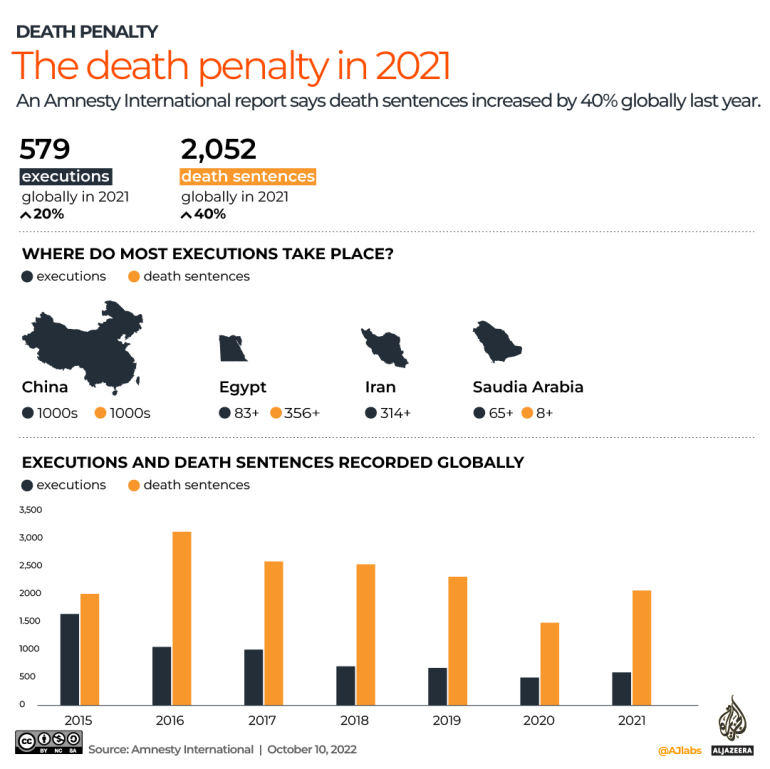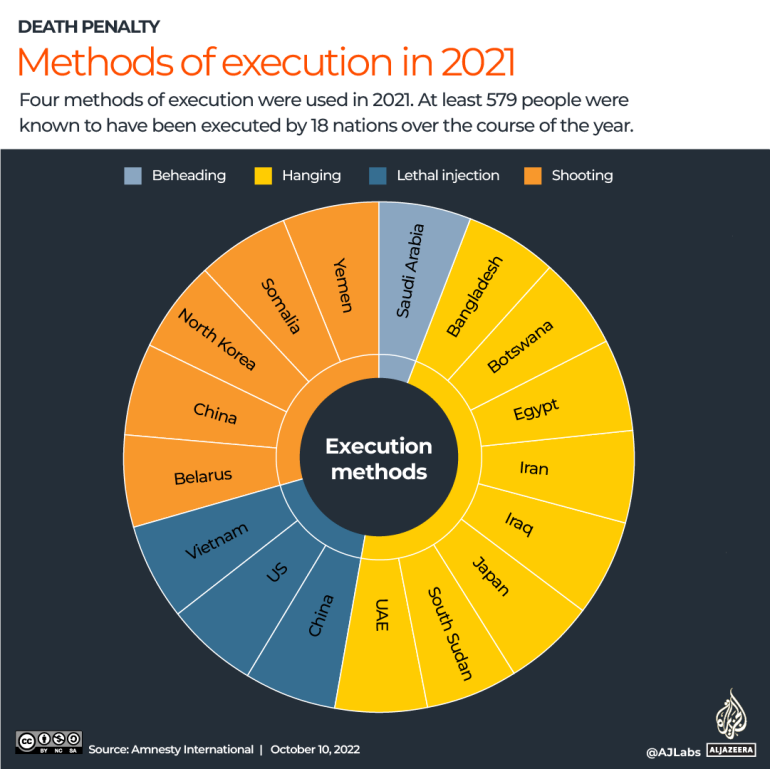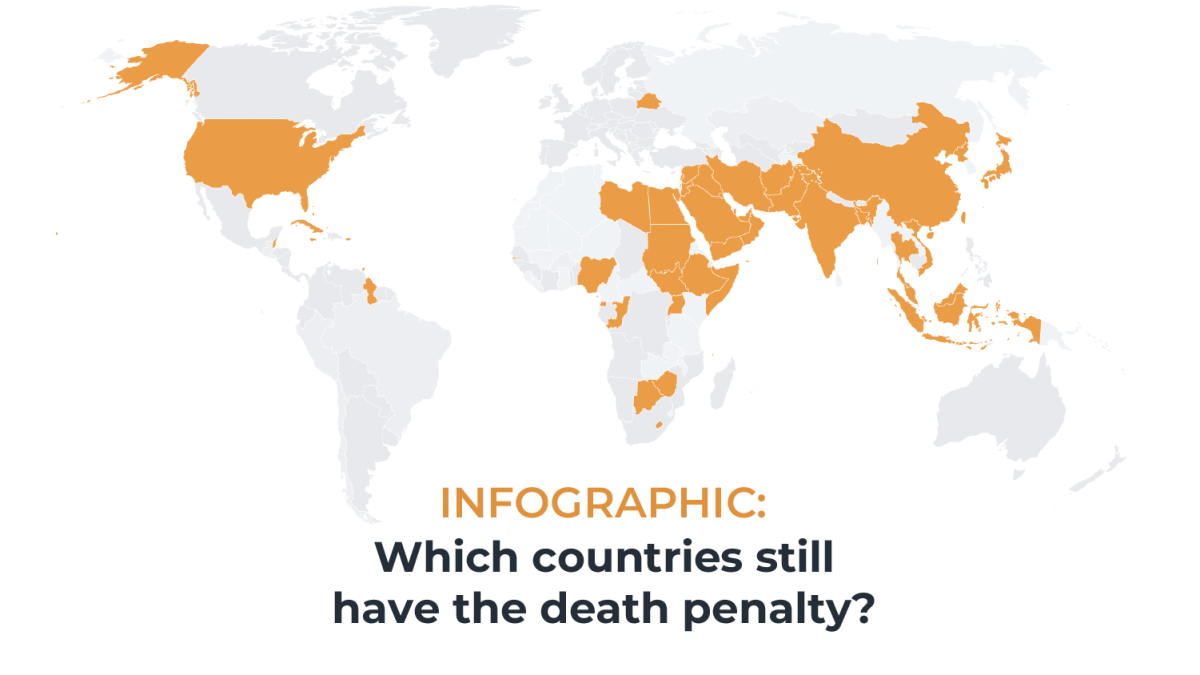October 10 is the World Day Against the Death Penalty. Here are three graphics explaining capital punishment around the world.
The theme of this year’s World Day Against the Death Penalty is safeguarding the health and rights of women and girls.
According to Amnesty International, more than two-thirds of the world’s countries have abolished the death penalty in law or practice.
By the end of last year, 108 countries had abolished the death penalty for all crimes, eight countries had abolished the death penalty for crimes not committed during times of war and 28 countries still retained the death penalty but had not executed anyone over the past 10 years.
Fifty-five countries still retain and implement the death penalty.
On September 20, Equatorial Guinea became the latest country to abolish the death penalty when its president signed a new penal code into law. It will come into force in three months.
Executions and sentences in 2021
At least 579 people, including 24 women, are known to have been executed by 18 nations in 2021 – up by 20 percent from 2020.
Three countries accounted for 80 percent of all known executions in 2021: Iran (at least 314), Egypt (at least 83) and Saudi Arabia (65).
The recorded global totals do not include the thousands of executions that Amnesty International believes were carried out in China, where data on the death penalty are classified as a state secret.
The number of known death sentences also increased from 1,477 in 2020 to at least 2,052 in 2021 – an increase of nearly 40 percent.

Methods of execution by country in 2021
Four methods of execution were used in 2021. The most common were hanging and firing squads.
Lethal injection is the most widely used method of execution in the United States, but some states authorise other methods, including electrocution, lethal gas, hanging and a firing squad. Beheading with a sword is the predominant form of execution in Saudi Arabia.

